A Guide to the World's Most Beloved Flowers
Flowers. They're pretty, they smell nice, and they're everywhere. But what's the story behind the rose, and why did people once trade houses for a single tulip bulb? Let's find out.
Understanding Flower Families
There are tons of flowers out there, but they aren't just a random jumble. Botanists group them into families based on shared features, creating a family tree that makes sense of the chaos. Understanding these families helps you see the connections between totally different-looking plants.
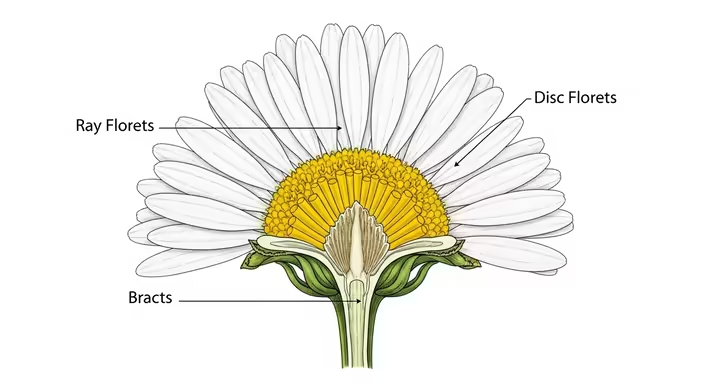
Take the Asteraceae family (which used to be called Compositae). What you think is a single flower - like a daisy or sunflower - is actually a dense head made of hundreds of tiny, individual flowers called florets. 1, 2 The outer "petals" are ray florets, and the central "disk" is a cluster of disc florets, all protected by a ring of bracts at the base. 1, 2
The name Asteraceae comes from the Greek word aster , meaning "star," a nod to the flower's star-like shape. 2 A common feature is the pappus, a tuft of hairs that helps seeds travel on the wind. Think of the fluffy white head of a dandelion just before you blow on it. 2
Then there’s the Rosaceae family, which gives us both beautiful flowers and some of our favorite foods. The rose is the most famous member, of course. But the blossoms on apple, pear, peach, cherry, and plum trees are all part of the family, as are the flowers on raspberry and strawberry plants. 3 A common trait is a built-in security system, many species like roses and blackberries have thorns or prickles to protect themselves from animals. 4
Iconic Flowers
The Rose (Rosa)
The rose is... well, it's a big deal. For thousands of years, it has been the go-to flower for just about every human emotion. Classic types like the Hybrid Tea have tight, sculpted buds that open into a perfect spiral of petals. 5 In contrast, English Roses are packed with 41 or more petals, giving them a lush, full look. 6 The genus Rosa is also ancient, with fossils showing it's been around for at least 35 million years. 7
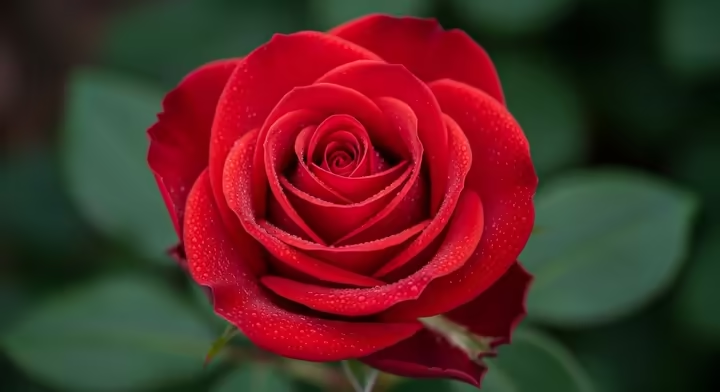
The symbolism of the rose is just as deep. In the Middle Ages, a red rose meant divine love and sacrifice to Christians, while a white rose stood for purity. 8 The flower was so powerful it became the symbol for the warring factions in 15th-century England - the "War of the Roses," with red for Lancaster and white for York. 7 Later, the Romantics saw the wild rose as a symbol of untamed beauty. 8
The Tulip (Tulipa)
This cup-shaped flower is now a symbol of the Netherlands, but its story began in the Ottoman Empire, where it was a sign of power. 9 It came to Europe in the late 16th century and quickly became a status symbol for the wealthy Dutch. The most prized tulips were those with striped or speckled petals, an effect caused by a virus that resulted in "broken" colors. 9
By the 1630s, this obsession turned into "Tulip Mania," a full-blown economic bubble. People frantically bought and sold bulbs at insane prices, with a single bulb sometimes costing as much as a fancy house in Amsterdam. 10 The bubble burst in February 1637, ruining many investors. 10 Today, a red tulip symbolizes perfect, deep love. 11
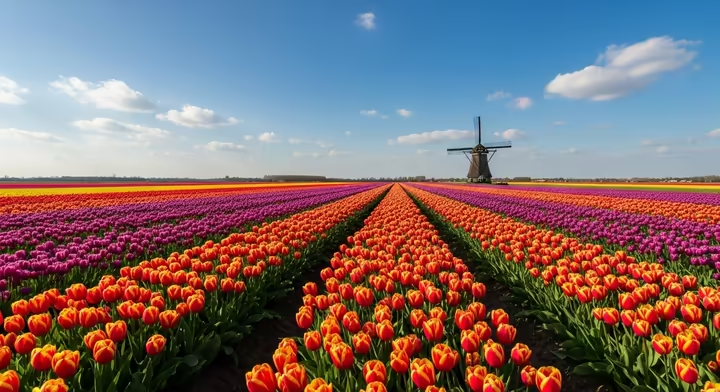
The Lily (Lilium)
True lilies (from the genus Lilium ) have large, graceful, funnel-shaped blossoms on top of tall stalks. 12 Their flowers are usually made of three petals and three sepals that look almost identical. 12 Because of their strong association with purity and innocence, white lilies are often used in sympathy arrangements. 11
But then there’s the Calla Lily, which isn't a lily at all - it's from a different plant family entirely. 12 You can spot the difference by its thick stalk and single, trumpet-shaped leaf (a spathe) wrapped around a central spike (the spadix). 12 The Calla Lily also represents purity, but its bold shape adds meanings of grace and elegance, making it a popular choice for weddings. 11, 12
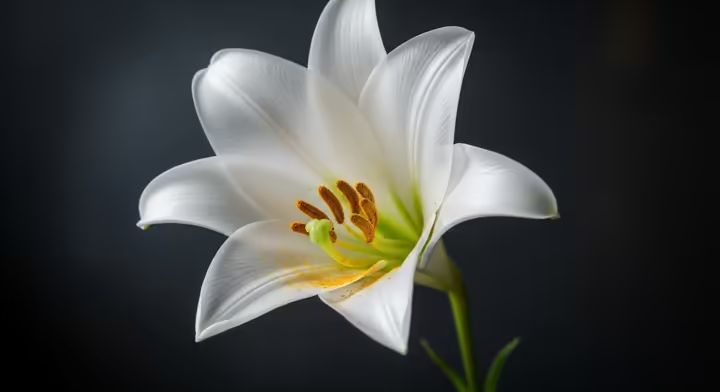
The Orchid (Orchidaceae)
Orchids look delicate and fancy, with wild patterns and perfect symmetry. 13 In the Victorian era, their exotic look made them a symbol of wealth and high society. 13 Today, they still represent luxury, beauty, and good taste.
But they're tougher than they look. Many orchids can grow in very harsh places, so they also symbolize strength and perseverance. 13 The name itself comes from the ancient Greek word orchis , which was apparently related to male anatomy, giving the flower a link to fertility in some cultures. 13
The most popular type is the Phalaenopsis (Moth Orchid), which symbolizes happiness. 13 The grand Cattleya, known as the "Queen of Orchids," represents mature charm and respect. 13
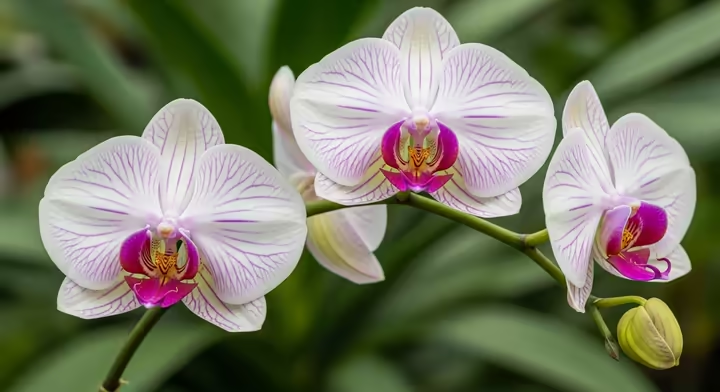
The Sunflower (Helianthus)
With its huge, cheerful face, the sunflower is a clear symbol of adoration and loyalty. Its scientific name, Helianthus , comes from the Greek words helios (sun) and anthus (flower). 15 But its sun-following reputation isn't quite right.
Only the young sunflower bud actually tracks the sun from east to west during the day, resetting to face east overnight. 16 Once it's mature, the flower stops moving and stays fixed facing east, waiting for the sunrise. 16 This fixed gaze connects to a Greek myth about a nymph named Clytie, who was turned into a sunflower but never stopped watching her lost love, the sun god Apollo, cross the sky. 15
The sunflower also represents abundance and joy. More recently, it has become a symbol of peace and hope, as it was planted at disaster sites like Chernobyl and Fukushima to help absorb toxins from the soil. 15
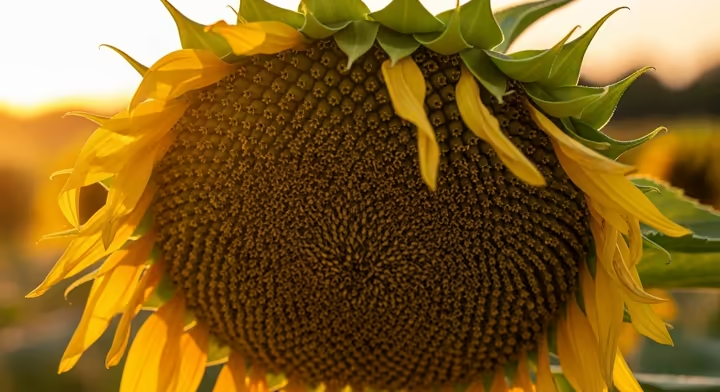
The Peony (Paeonia)
Peonies are the big, fluffy clouds of the flower world, famous for their romantic look and amazing smell. Their soft, ruffled petals make them a favorite for weddings. In Western cultures, they symbolize a happy marriage and are the traditional flower for a 12th anniversary. 17
In Asia, the peony is even more important. In China, it’s called the “King of Flowers” ( huawang ) and represents wealth, honor, and prosperity. 18 During the Tang Dynasty, it was grown only in the emperor's gardens. 18 It's also known as the “flower of riches and honor” ( fùguìhuā ). 17
Popular types include the classic pink 'Sarah Bernhardt' and the 'Coral Charm,' whose petals change color from coral pink to peach and cream as they open. 18
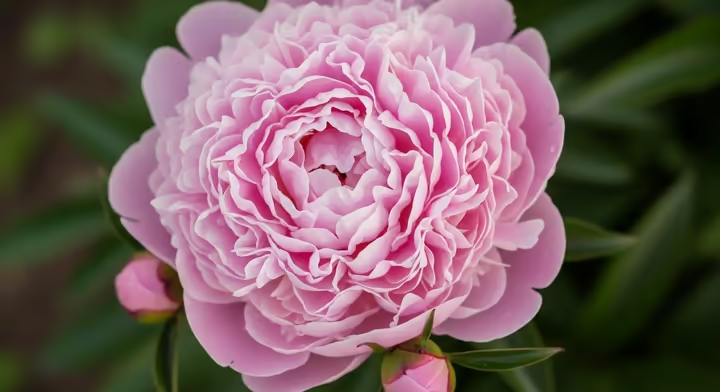
The Dahlia (Dahlia)
Dahlias come in a wild variety of shapes and sizes. You can find everything from a small, perfectly round ball (a pompon) to the giant "dinner plate" dahlia, which is as big as its name suggests. 19 The petals are often arranged in complex, mesmerizing patterns.
Originally from Mexico, the dahlia was important to the Aztecs, who saw it as a symbol of strength and used its tubers as medicine. 19 In Victorian times, it stood for dignity and elegance. 19 Today, the dahlia often represents change and new beginnings, much like how it transforms from a tight bud to a full, spectacular bloom. 19
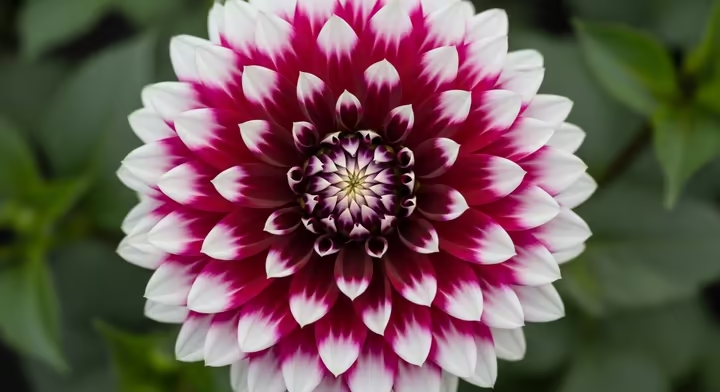
The Hydrangea (Hydrangea)
Hydrangeas are known for their huge, puffy clusters of flowers that can fill a garden with color. But their coolest trick is that they can change color based on the soil they grow in. 20 It's all about chemistry.
In acidic soil (pH below 6), the plant can absorb aluminum ions, which helps turn the flowers blue. 20 In alkaline soil (pH above 6), aluminum isn't as available, so the flowers turn pink or red. 20 This unique trait ties into its symbolism of heartfelt emotion and gratitude, as if the flower is showing its feelings through its color. 20
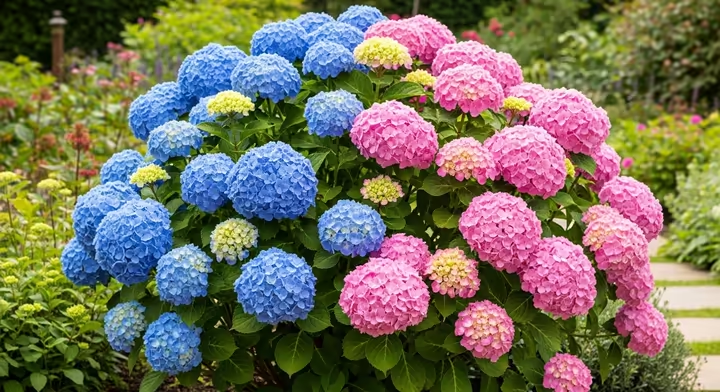
Making a Bouquet
A good-looking bouquet is built from three main parts: focal flowers, filler flowers, and greenery. Each part has a specific job to do.
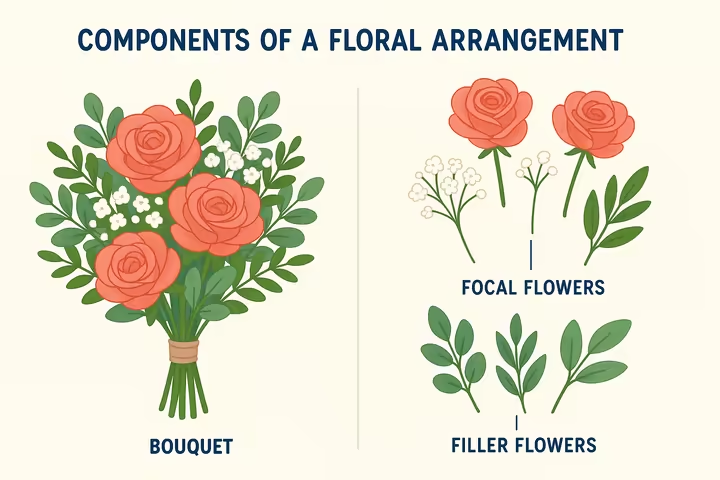
Focal flowers are the stars of the show. They're usually the biggest and boldest blooms in the bunch, like lilies, peonies, or roses, and they set the overall tone of the arrangement. 21 They're the first thing your eye is drawn to.
Filler flowers are the supporting cast. These are smaller blooms like Baby's Breath ( Gypsophila ) or Waxflower that add volume, texture, and softness to the bouquet. 22 They fill in the gaps and make the whole thing look lush and full. 22
Finally, greenery is the foundation. Foliage like Eucalyptus or Ferns provides a natural backdrop that makes the flower colors pop. 21 It adds structure, contrast, and helps tie the whole arrangement together. 22 Mix them right, and you can create a bouquet for any occasion - from romantic peonies at a wedding to cheerful sunflowers to brighten someone's day. 23
Flowers Around the World
What a flower means can change a lot depending on where you are in the world. Different cultures and climates give flowers their own unique stories.
In Asia, flowers are often packed with spiritual meaning. The Cherry Blossom, or Sakura , is huge in Japan. Its short-lived bloom is a beautiful reminder that life is fleeting and every moment should be cherished, a concept called mono no aware . 24 The Lotus flower, which grows out of murky water to bloom clean and pure, is a powerful symbol of enlightenment and rebirth. 24
Australian flowers are all about surviving in a tough climate. The Kangaroo Paw has weird, furry, tube-shaped flowers that look like... well, kangaroo paws. 26 It evolved to be pollinated by birds instead of insects, a smart adaptation for a dry land. 27 The crimson Waratah, the floral emblem of New South Wales, gets its name warada from an Aboriginal word meaning "beautiful" or "seen from afar." 28
South Africa is home to the Protea, an ancient flower with fossils dating back 300 million years. It’s named after the Greek god Proteus, who could change his shape, because the plant comes in so many different forms. 30 The King Protea, with its giant, artichoke-like head, is the national flower and a symbol of strength and resilience. 30
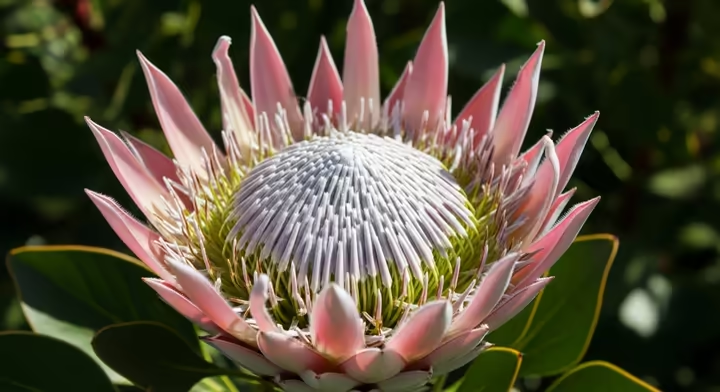
In the Americas, flowers often represent freedom and tropical beauty. The Bird of Paradise, originally from South Africa, has become an icon of paradise here. 32 Its flower looks like a bird in flight and symbolizes joy and freedom. 32 And the bright orange California Poppy, which can cover entire hillsides in gold, is the perfect symbol of the rugged American West. 34
So, What's the Point?
A flower is a piece of history, a science experiment, and a storyteller all in one. The daisy's complex head, the hydrangea's color-changing trick, the tulip's wild economic history, and the sunflower's loyal gaze all connect the natural world to our own lives.
So next time you see a rose, a lily, or any other flower, don't just walk by. Look closer and remember its story. You'll have a much deeper appreciation for the beautiful, weird, and fascinating world of blooms.
Works cited
- Asteraceae | Characteristics, Inflorescence, Vegetables, Examples, & Facts - Britannica, https://www.britannica.com/plant/Asteraceae
- Asteraceae - Wikipedia, https://en.wikipedia.org/wiki/Asteraceae
- Insight on Rosaceae Family with Genome Sequencing and Functional Genomics Perspective - PMC - PubMed Central, https://pmc.ncbi.nlm.nih.gov/articles/PMC6399558/
- www.bowhayestrees.co.uk, https://www.bowhayestrees.co.uk/post/rosaceae-family-characteristics-importance#:~:text=Many%20have%20thorns%2C%20spines%2C%20or,that%20die%20back%20in%20winter.
- Rose Bloom Shapes: A Guide to Rose Forms and Petal Counts | Jackson & Perkins, https://www.jacksonandperkins.com/blog/rose-blogs/rose-bloom-shapes-forms-petal-counts/b/rose-bloom-shapes-forms-petal-counts/
- Examples of Bloom Form and Petal Count in Roses - Hedgerow Rose®, https://hedgerowrose.com/rose-gardening/2016/02/10/examples-of-bloom-form-and-petal-count-in-roses/
- The History of Roses | Roses | Illinois Extension | UIUC, https://extension.illinois.edu/roses/history-roses-0
- A Philosopher's Guide to the History of Roses: From Symbol to ..., https://www.petalandpoem.com/floral-thoughts/a-philosophers-guide-to-the-history-of-roses-from-symbol-to-substance
- The Fascinating History of Tulips & the Rise of Tulip Mania, https://www.bloomsybox.com/blog/posts/the-fascinating-history-of-tulips-and-the-rise-of-tulip-mania
- Tulip Mania: The World's First Economic Bubble - Gardenia.net, https://www.gardenia.net/guide/tulip-mania-the-world-first-economic-bubble
- Flower Glossary: The Meanings of Lilies and Calla Lilies Based on ..., https://www.hbloom.com/blogs/in-bloom-with-h-bloom/flower-glossary-lilies
- Key Difference Between Lily and Calla Lily - Floristique, https://www.floristique.sg/blogs/intro/calla-lilies-vs-lilies-how-to-tell-the-difference
- Symbol of Elegance - In-depth Analysis of Orchid Meaning – Faful ..., https://fafulflorist.com/blogs/information/orchid-meaning
- Orchid Flower: Meaning & Color Symbolism | Venus et Fleur, https://www.venusetfleur.com/blogs/news/orchid-flower-meaning-color-symbolism
- The Sunflower Story - Earth Works, https://www.earthworksjax.com/blog/sunflower-story/#:~:text=It%20comes%20from%20the%20Greek,his%20affections%20towards%20another%20nymph.
- Heliotropism - Wikipedia, https://en.wikipedia.org/wiki/Heliotropism
- The Meaning of Peonies: Unveiling Their Secrets in Bloom – Neroli ..., https://neroliblume.com/blogs/flower-facts/meaning-of-peony
- The Peony Flower: Meanings, Images & Insights | Floraly, https://www.floraly.com.au/blogs/news/peony-flower-meanings
- Explore the Bold Symbolism of Dahlia Flowers – Rosaholics, https://rosaholics.com/blogs/rosaholics-bloggers/dahlia-meaning-and-symbolism
- How Do Growing Conditions Affect Hydrangea Bloom Color - Vogue ..., https://www.vogueflowers.com/soil-conditions-affect-hydrangea-bloom-color
- When it comes to creating a floral arrangement, the possibilities are endless. There are hundreds of types of flowers to choose - Peirone Produce, https://peironeproduce.com/core/files/peironeproduce/uploads/files/Design%20groups%20peirone%202020%20(002).pdf
- Greenery, Fillers, and the Secret Heroes of Flower Arrangements - Whole Blossoms, https://www.wholeblossoms.com/wedding-flowers-blog/greenery-fillers-and-the-secret-heroes-of-flower-arrangements/
- How to Choose the Perfect Flower Bouquet for Different Occasions, https://monsoonflowers.com/blogs/topics/perfect-flower-bouquet-for-different-occasions
- Unveiling 5 Asian Flowers and Their Meanings, A Must Know! - Eternity Flower, https://www.eternityflower.com/blogs/news/asian-flowers-and-their-meanings
- The cultural significance of cherry blossoms in Japan - Watts Gallery, https://www.wattsgallery.org.uk/blog/the-deep-cultural-significance-of-cherry-blossoms-in-japan
- Kangaroo paw - Wikipedia, https://en.wikipedia.org/wiki/Kangaroo_paw
- Kangaroo Paws - Gardens by the Bay, https://www.gardensbythebay.com.sg/en/learn-with-us/explore-resources/whats-blooming/kangaroo-paws.html
- Waratah | Booderee National Park | Parks Australia, https://booderee.gov.au/discover/nature/plants/waratah/
- Waratah | Northern Beaches Council, https://www.northernbeaches.nsw.gov.au/environment/species/waratah
- The Majestic Protea: Growing, Caring, and Symbolism Guide - LOV Flowers, https://lovflowers.co.uk/blogs/news/protea
- July: Protea Moon | Centre for Astronomical Heritage (CfAH), https://cfah.org.za/fullmoon/protea-moon/
- Bird of Paradise Meaning and Symbolism | easyplant, https://easyplant.com/blog/bird-of-paradise-meaning
- Bird of Paradise - FloraLife, https://floralife.com/flowers/bird-of-paradise/
- California Poppy - Calscape, https://calscape.org/Eschscholzia-californica-(California-Poppy
- California Poppy - California Department of Fish and Wildlife, https://wildlife.ca.gov/Conservation/Plants/California-Poppy